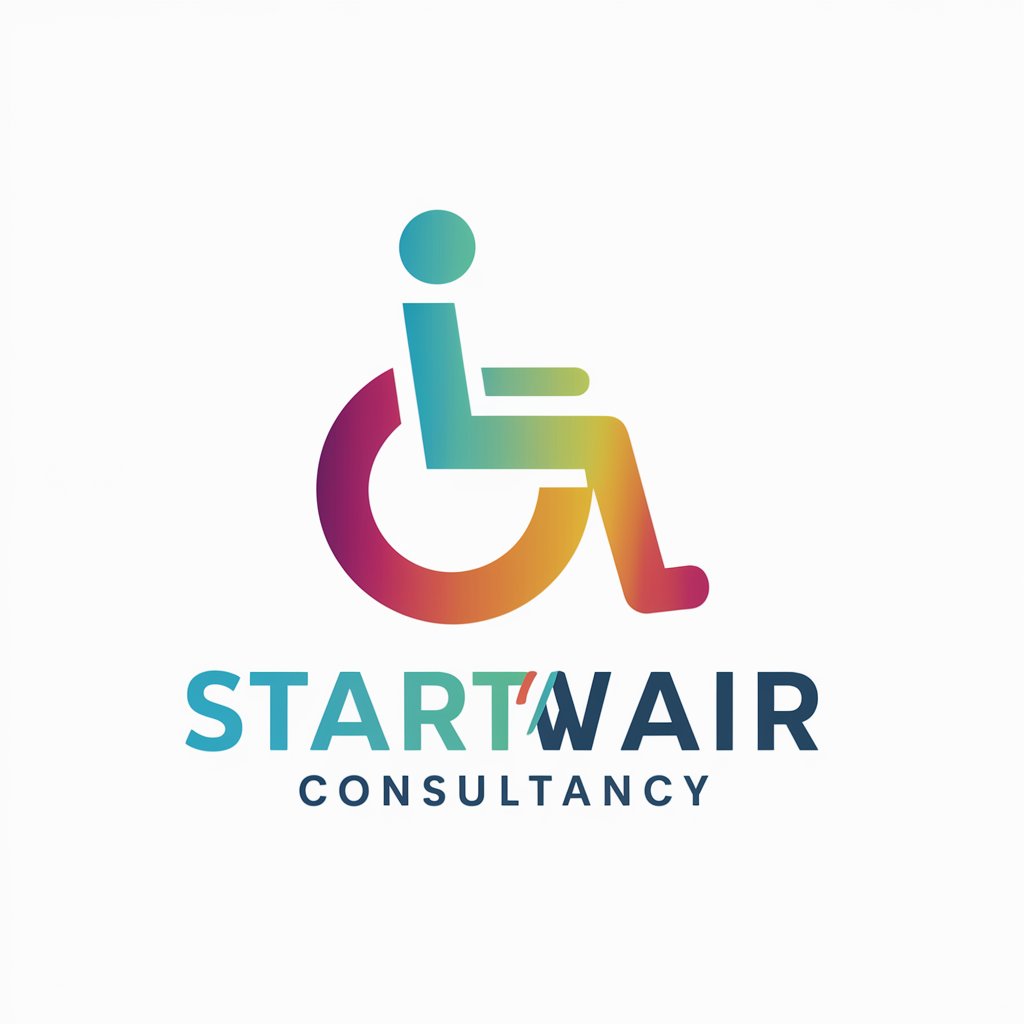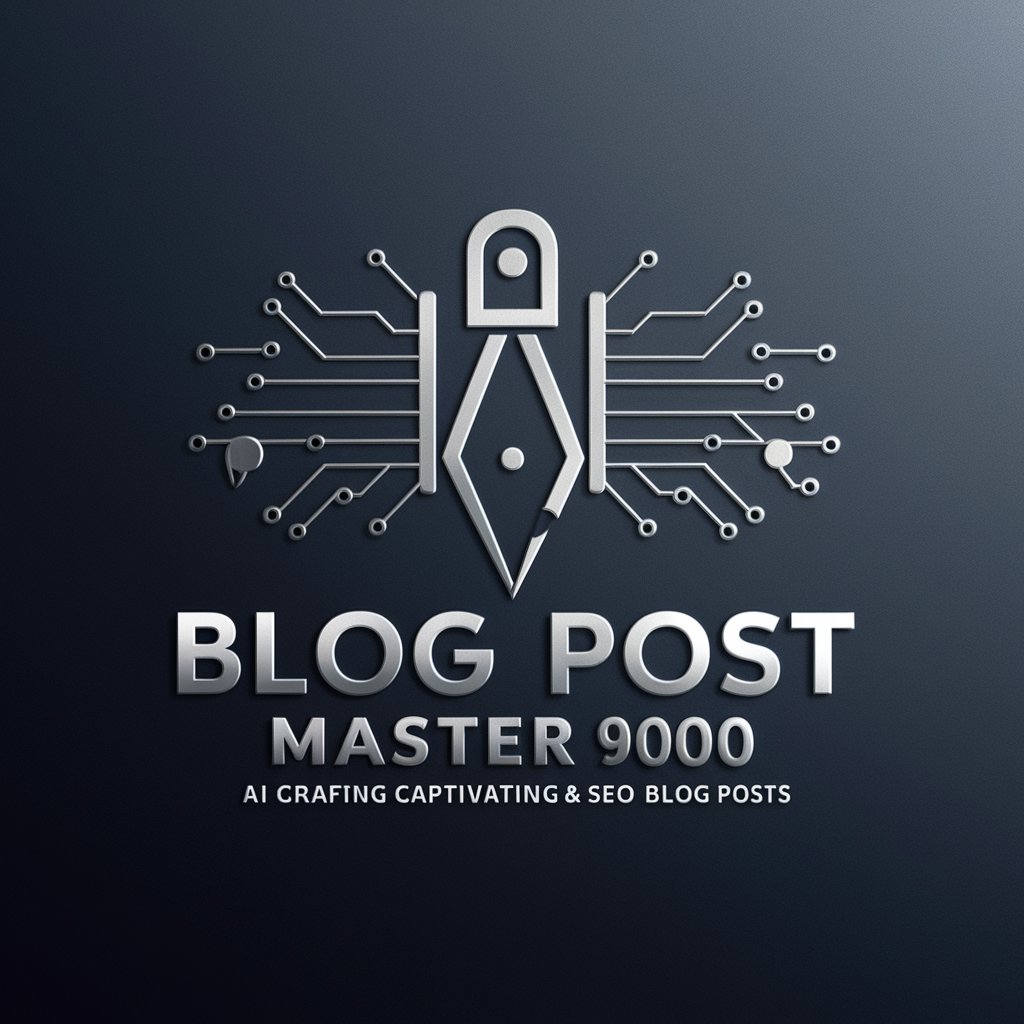
Blog Post Composer - AI-Powered Blog Creation

Welcome! Let's explore the world of AI and technology together.
Crafting Intelligent, SEO-Driven Content
Explore the latest trends in AI and technology with our blog, featuring...
Discover insightful tips and strategies for succeeding in tech interviews...
Learn about cutting-edge developments in artificial intelligence and how they impact...
Dive into comprehensive guides on AI and technology topics, perfect for...
Get Embed Code
Introducing Blog Post Composer: Your AI-Powered Writing Assistant
Blog Post Composer is an AI-driven tool designed to empower writers, marketers, and content creators in crafting engaging, SEO-optimized blog posts, specifically within the realms of AI and technology. Unlike traditional writing tools, Blog Post Composer is tailored to generate content that is not only informative but also structured to meet SEO standards and the creative vision of its users. The tool is equipped to handle a range of topics, from introductory pieces on emerging technologies to in-depth discussions on complex AI concepts. An example scenario could involve a user seeking to create a comprehensive guide on the latest AI advancements. Blog Post Composer would assist by generating a well-structured draft, incorporating key SEO strategies, and ensuring the content is both accessible and engaging to a wide audience. Powered by ChatGPT-4o。

Core Capabilities of Blog Post Composer
SEO Optimization
Example
Generating keyword-rich titles and headings
Scenario
A user wants to write a post on 'Future of AI in Healthcare'. Blog Post Composer suggests an SEO-optimized title, 'Exploring the Revolutionary Impact of AI in Healthcare's Future', and structures the content with relevant headings and keywords to improve search engine rankings.
Creative Content Generation
Example
Producing engaging and informative blog posts
Scenario
A tech blogger is looking for fresh content ideas. Using Blog Post Composer, they generate a post titled 'The Unseen Heroes: Software Engineers Behind Today’s Tech Giants', filled with compelling narratives and insights into the software engineering world.
Target Audience Analysis
Example
Tailoring content to specific reader demographics
Scenario
A digital marketing agency aims to attract a more tech-savvy audience. Blog Post Composer analyzes the target demographic and crafts a series of blog posts that resonate with tech enthusiasts, focusing on topics like innovative marketing tools powered by AI.
Content Structuring
Example
Organizing blog posts for readability and engagement
Scenario
An AI startup wants to explain complex AI concepts to a non-technical audience. Blog Post Composer helps structure the content with clear headings, bullet points, and summaries to enhance readability and ensure the audience grasps the key takeaways.
Who Can Benefit from Blog Post Composer?
Content Marketers
Content marketers in the tech industry can leverage Blog Post Composer to create compelling, SEO-driven content that aligns with their marketing strategies and goals, ensuring their company’s or clients' blogs rank high on search engine results pages.
Tech Bloggers
Tech bloggers looking to consistently produce high-quality, engaging content on various tech topics will find Blog Post Composer invaluable for generating ideas, structuring posts, and optimizing them for search engines.
Digital Marketing Agencies
Agencies focusing on digital marketing for tech companies can use Blog Post Composer to efficiently produce a variety of content for their clients, from thought leadership articles to detailed guides on using specific technologies.
AI Enthusiasts and Educators
Individuals passionate about AI and those looking to educate others about AI and technology can utilize Blog Post Composer to craft informative and accessible content that demystifies complex concepts for a broader audience.

Using Blog Post Composer: A Step-by-Step Guide
1
Visit yeschat.ai to start using Blog Post Composer with a free trial, no login or ChatGPT Plus required.
2
Choose a topic or keyword for your blog post, focusing on areas related to AI and technology.
3
Provide specific guidelines or a creative vision for your blog post, including style, tone, and any SEO requirements.
4
Review and edit the generated blog post to ensure it aligns with your expectations and objectives.
5
Utilize the Blog Post Composer regularly for diverse content needs to become familiar with its capabilities and enhance your content strategy.
Try other advanced and practical GPTs
Best GPT Builder
Build Your AI, Simplify Your Task

GPTFinder
Find Your Perfect AI Match

Builder Buddy
Empowering Creativity with AI

GPT Apprentice
Navigating Abstract Ideas with AI

GeniePT
Empowering Creativity with AI

Mentor Start-Up
Empowering startups with AI-driven insights.

AI Insight Writer
Expert AI insights at your fingertips.

Political Bias Media Assessor
Unveil bias with AI-powered analysis.

Ask Ellen White
Explore Ellen White's wisdom, powered by AI

Research Partner
Elevating Research with AI Insight

Research Architect
AI-powered research structuring tool

Yo Mama
Where AI Meets Comedy

Frequently Asked Questions About Blog Post Composer
What types of blog posts can Blog Post Composer generate?
Blog Post Composer specializes in creating engaging, SEO-optimized content focused primarily on AI and technology. It can adapt to various writing styles and formats, making it suitable for educational, informative, and thought-leadership content.
How does Blog Post Composer ensure SEO optimization?
The tool incorporates SEO strategies by focusing on keyword density, relevant content structuring, and providing insightful information that aligns with search engine algorithms, enhancing visibility and engagement.
Can Blog Post Composer adapt to different writing styles?
Yes, Blog Post Composer can adjust to various writing styles, from formal to conversational, depending on user input and requirements, ensuring versatility in content creation.
Is it possible to edit the content generated by Blog Post Composer?
Absolutely. Users are encouraged to review and edit the generated content to refine and personalize it, ensuring it perfectly fits their unique content goals and standards.
What makes Blog Post Composer stand out from other AI writing tools?
Blog Post Composer stands out due to its specialization in AI and technology topics, ability to generate SEO-optimized content, adaptability to user-guided creative visions, and focus on producing high-quality, engaging articles.





